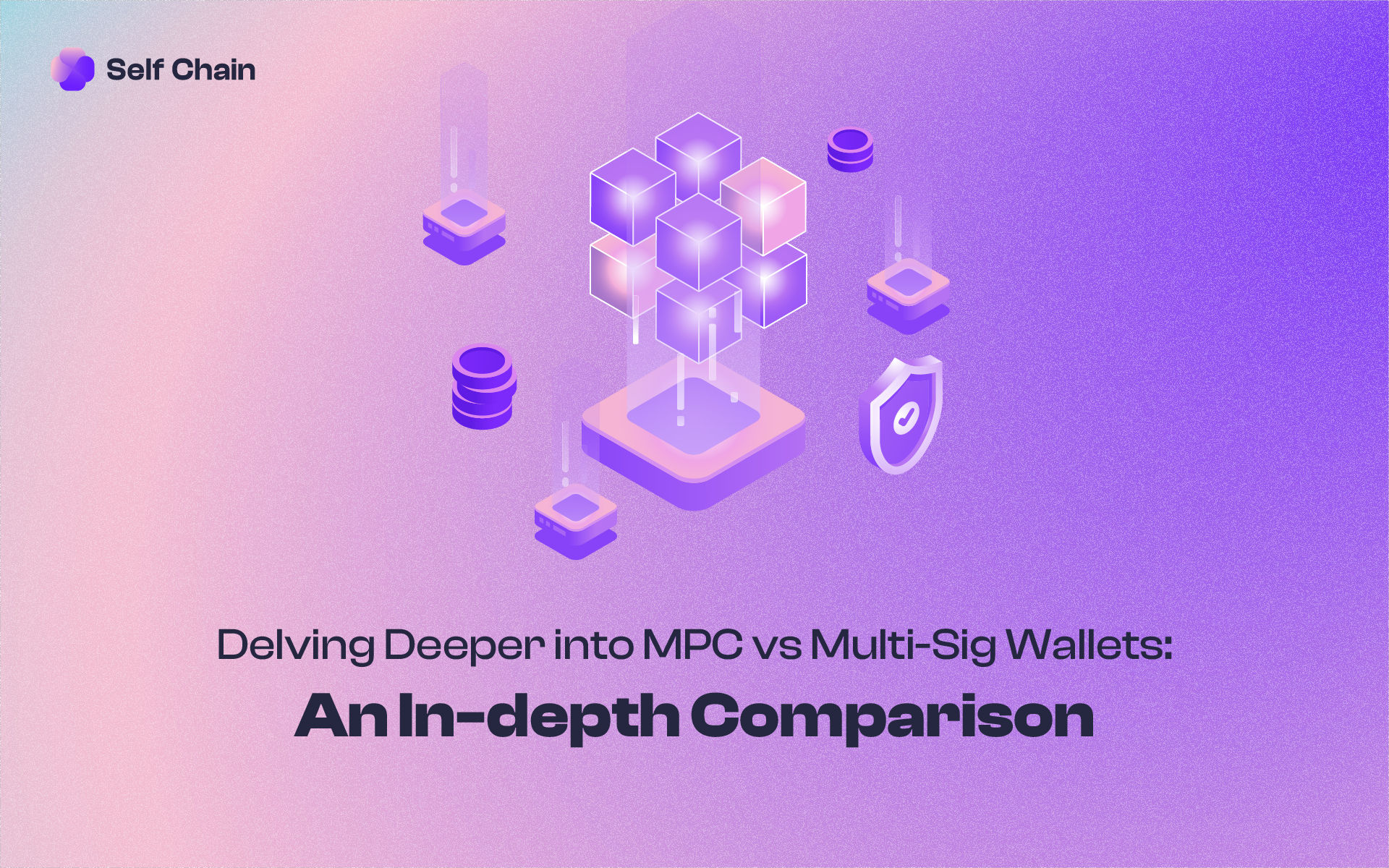Delving Deeper into MPC vs. Multi-Sig Wallets: An In-depth Comparison
MPC wallets redefine blockchain security with real-time quorum adjustments and superior multichain support.

In the landscape of digital asset management, Multi-Party Computation (MPC) and Multi-Signature (Multi-Sig) wallets stand out as pivotal technologies. Each brings its unique strengths to the table, catering to different needs within the blockchain community. Let's expand on their differences and how they redefine security and accessibility.
Enhanced Approval Quorum Flexibility with MPC
MPC wallets shine with their dynamic approval quorums, a feature that introduces a level of flexibility unseen in traditional wallet structures. This flexibility allows for real-time adjustments to the number of shares needed to authorize a transaction, making MPC wallets particularly suitable for entities that experience frequent changes in their operational or governance structures. This adaptability contrasts sharply with multi-sig wallets, where the approval quorum is fixed at the wallet's creation, necessitating the creation of a new wallet for any adjustment in the number of signatories.
Unparalleled Multichain Support
One of the most significant advantages of MPC wallets is their blockchain-agnostic nature, which allows for the seamless management of assets across various blockchains. This capability is invaluable for users who interact with multiple cryptocurrencies and platforms, enabling them to use a single wallet for all their needs. In contrast, multi-sig wallets often tie users to specific blockchains, limiting their ability to manage diverse portfolios without resorting to multiple wallets, each with its own set of keys and security protocols.
Superior Transaction Privacy and Efficiency
MPC wallets excel in preserving transaction privacy and enhancing efficiency. By broadcasting only one signature to the blockchain, these wallets keep the key sequence — and by extension, the transaction's participants — private. This approach not only bolsters security but also reduces the transaction's footprint on the blockchain, leading to lower fees and faster processing times. On the other hand, multi-sig wallets require all signatures to be broadcasted, making the transaction heavier, more expensive, and potentially exposing the identity and number of participants involved in the approval process.
The Future of Digital Asset Management
As we look toward the future of digital asset management, the choice between MPC and multi-sig wallets will largely depend on the specific needs of users, including their requirements for flexibility, privacy, and cross-chain functionality. While multi-sig wallets have been a mainstay for shared asset control, the advent of MPC technology, exemplified by innovations like Self Chain's keyless wallet infrastructure, is setting new standards for security, privacy, and user experience across the blockchain ecosystem.
In conclusion, the evolution from multi-sig to MPC wallets reflects the broader trends in blockchain technology towards more secure, efficient, and user-friendly solutions. As users and organizations become more sophisticated in their digital asset management needs, the flexibility, privacy, and efficiency offered by MPC wallets, particularly those developed by Self Chain, are likely to make them the preferred choice for securing digital assets now and in the future.
About Self Chain
Self Chain is the first Modular Intent-Centric Access Layer1 blockchain and keyless wallet infrastructure service using MPC-TSS/AA for multi-chain Web3 access. The innovative system simplifies the user experience with its intent-focused approach, using LLM to interpret user intent and discover the most efficient paths.
Self Chain ensures that onboarding and recovery are effortless with keyless wallets that grant users complete self-custody over their assets. In addition, it provides automated rewards to dApps when they efficiently resolve user intent, further enhancing the user experience. Moreover, Self Chain incorporates Account Abstraction with MPC-TSS to provide secure signing and reduce transaction fees. It's a platform that redefines blockchain interaction, making it more secure and user-friendly for everyone.
In a world where blockchain technology is becoming increasingly essential, the user experience remains a critical factor in its adoption. Intents and Keyless Wallets are set to transform the landscape, making blockchain interactions more accessible, efficient, and secure. As we move forward, the blockchain industry has the opportunity to provide users with a seamless and enjoyable experience, unlocking the full potential of this groundbreaking technology.
